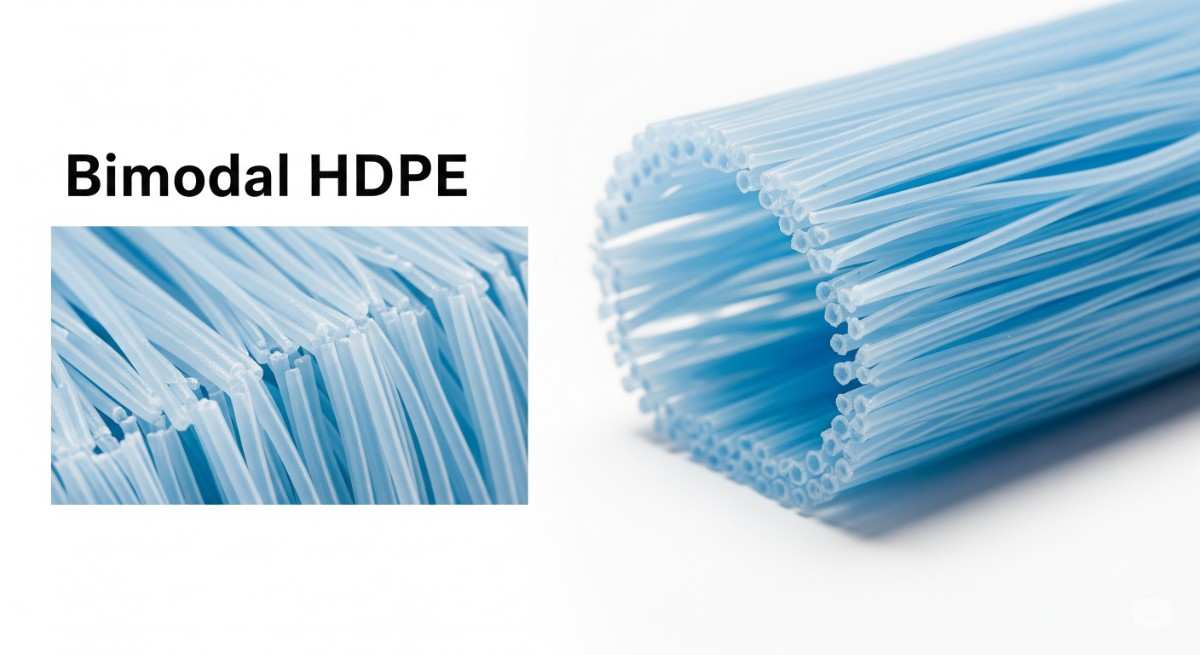Germany’s bimodal high-density polyethylene (HDPE) market is experiencing significant growth, driven by the nation’s commitment to sustainability and innovation. With advancements in processing technologies and a strong emphasis on eco-friendly materials, Germany is poised to lead the European bimodal HDPE sector in the coming years.
Market Overview: Growth Trajectory and Forecast
As of 2024, Germany’s bimodal HDPE market was valued at approximately USD 586.6 million. Projections indicate that the market will reach USD 965.2 million by 2030, growing at a compound annual growth rate (CAGR) of 8.2% from 2025 to 2030. This growth is attributed to the increasing demand for durable and sustainable plastic solutions across various industries.
Key Processing Methods: Extrusion Leads the Way
In 2024, extrusion emerged as the dominant processing method in Germany’s bimodal HDPE market, accounting for 58.29% of the revenue share. The extrusion process is favored for its efficiency and the superior mechanical properties it imparts to HDPE products, making it ideal for applications in construction and infrastructure.
Applications Driving Demand
1. Packaging Industry
Germany’s packaging sector is undergoing a transformation, with a shift towards recyclable and lightweight materials. Bimodal HDPE’s excellent strength-to-weight ratio and recyclability make it a preferred choice for manufacturers aiming to meet environmental regulations and consumer expectations.
2. Construction and Infrastructure
The construction industry in Germany is leveraging bimodal HDPE for applications such as piping systems and geomembranes. The material’s durability and resistance to environmental stress cracking are essential for long-term infrastructure projects.
3. Automotive Sector
With the automotive industry’s focus on reducing vehicle weight to improve fuel efficiency, bimodal HDPE is increasingly used in manufacturing lightweight components without compromising strength and safety
Sustainability Initiatives and Regulatory Impact
Germany’s commitment to environmental sustainability is evident in its regulatory frameworks. The Packaging Act (VerpackG) mandates recycling rates of 63% by 2025, encouraging the use of recyclable materials like bimodal HDPE. This legislation is a significant driver for the adoption of HDPE in various sectors. linkedin.com
Market Segmentation and Regional Insights
In the European context, Germany is projected to lead the bimodal HDPE market in terms of revenue by 2030. While the UK is identified as the fastest-growing regional market, Germany’s established industrial base and infrastructure investments position it as a central hub for HDPE applications in Europe.
Conclusion: Germany’s Strategic Position in Bimodal HDPE
Germany’s bimodal HDPE market is set for robust growth, underpinned by technological advancements, regulatory support, and a strong emphasis on sustainability. As industries continue to seek materials that offer durability, recyclability, and efficiency, bimodal HDPE stands out as a versatile solution aligning with Germany’s environmental and economic objectives.
Sources : linkedin.com



